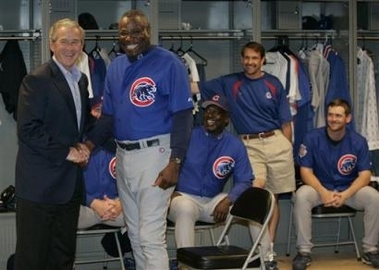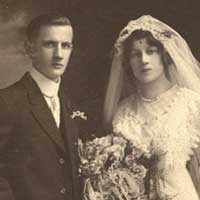 Ninety-five years ago, in 1910, seven of the eight individuals who would eventually become my Great Grandparents were living in Chicago. The eighth, arrived in 1911. I’m going to attempt to write about their lives and circumstances at the time, not from first-hand knowledge, but by blending information available and familiar to any genealogist; public records, family histories, and the recollections of their children and others who knew them. And the first couple that I will write about, is Victor and Rose.
Ninety-five years ago, in 1910, seven of the eight individuals who would eventually become my Great Grandparents were living in Chicago. The eighth, arrived in 1911. I’m going to attempt to write about their lives and circumstances at the time, not from first-hand knowledge, but by blending information available and familiar to any genealogist; public records, family histories, and the recollections of their children and others who knew them. And the first couple that I will write about, is Victor and Rose.
Vitus (Victor) Dedera was the youngest of his father Adelbert Dedera’s thirteen children. Adelbert, a tailor, had come to America from Bohemia with his second wife, Marie, in 1881. They spent two years living in New York, working to save the money needed to continue their journey to Chicago, which they did in 1883. Adelbert had brought seven children with him from Bohemia, and another had been born while in New York. Victor was the last of three more who were born in Chicago (two other children had died in infancy). A great deal of what I know of the Dedera’s comes from a family history written by Victor’s older (by eleven years) brother Adelbert (Albert). In 1910, Victor was nineteen years old and one of four children still living with his parents at 2809 Central Park Avenue. According to the Census, he was a “machine hand” working in a “machine shop”.
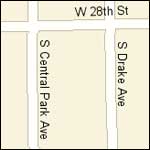 Like Victor, Rose Bicek was also the youngest child in a large family. Her parents, Martin and Marie had immigrated from Bohemia in 1883, bringing their two oldest children Marie and James with them. Rose was the last of four more daughters who were all born in Chicago. Martin had worked as a day laborer and teamster, and in 1910 at age 58 he worked as a watchman in a coal yard. Three daughters still lived with Martin and Marie in the home at 2818 Clifton Park Avenue (later renamed to Drake Ave). Sister Emma, married to Alfred Sengstock, a Wells Fargo clerk, lived there with their two-month old daughter Adeline. Bessie and Rose also lived at home when the Census taker visited their home in June of 1910. Rose had turned 17 in January, and both Rose and Bessie worked as servers at a “WholesaleN”?
Like Victor, Rose Bicek was also the youngest child in a large family. Her parents, Martin and Marie had immigrated from Bohemia in 1883, bringing their two oldest children Marie and James with them. Rose was the last of four more daughters who were all born in Chicago. Martin had worked as a day laborer and teamster, and in 1910 at age 58 he worked as a watchman in a coal yard. Three daughters still lived with Martin and Marie in the home at 2818 Clifton Park Avenue (later renamed to Drake Ave). Sister Emma, married to Alfred Sengstock, a Wells Fargo clerk, lived there with their two-month old daughter Adeline. Bessie and Rose also lived at home when the Census taker visited their home in June of 1910. Rose had turned 17 in January, and both Rose and Bessie worked as servers at a “WholesaleN”?
Other family members lived nearby. Victor’s older half-sister, Marie Jenicek lived with her husband and eight children down the street at 2831 Central Park Avenue. Their twelve year old son Albert, would one day marry Marie Novotny, who at the time was a nine-year old living at 2859 Central Park Avenue.
In addition to living near family, it jumps off of these census page how people chose to live among their own ethnic groups. For page after page, the place of birth of the individual’s parents is listed as ‘Aust Bohemian’. By the 1920 Census, following the breakup of the Austro-Hungarian Empire in World War One, the label would change to ‘Bohemia’ or ‘Czechoslovakia’.
But back to Victor and Rose. My grandmother, Marion, tells me that they enjoyed singing together. And that on walks in the neighborhood, Victor would visit with Rose on her families front porch, and join them in singing a few tunes. I haven’t yet found the exact date when they were married, but in the 1930 Census, Rose was reported as having married at age 20, which she turned in January of 1912. And grandma, the oldest of the five children they would have, was born in 1913.
Maybe they hadn’t even met yet in 1910. But the Census that year tells the story. My Great Grandfather Victor didn’t marry the girls next door. He found her a block over.
for further reading:
Czechs and Bohemians
Encyclopedia of Chicago
The Bohemian People of Chicago
by Josefa Humpal Zeman
Like this:
Like Loading...

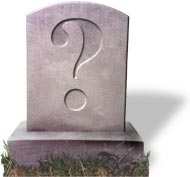
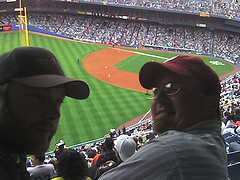
 Ninety-five years ago, in 1910, seven of the eight individuals who would eventually become my Great Grandparents were living in Chicago. The eighth, arrived in 1911. I’m going to attempt to write about their lives and circumstances at the time, not from first-hand knowledge, but by blending information available and familiar to any genealogist; public records, family histories, and the recollections of their children and others who knew them. And the first couple that I will write about, is Victor and Rose.
Ninety-five years ago, in 1910, seven of the eight individuals who would eventually become my Great Grandparents were living in Chicago. The eighth, arrived in 1911. I’m going to attempt to write about their lives and circumstances at the time, not from first-hand knowledge, but by blending information available and familiar to any genealogist; public records, family histories, and the recollections of their children and others who knew them. And the first couple that I will write about, is Victor and Rose. Like Victor, Rose Bicek was also the youngest child in a large family. Her parents, Martin and Marie had immigrated from Bohemia in 1883, bringing their two oldest children Marie and James with them. Rose was the last of four more daughters who were all born in Chicago. Martin had worked as a day laborer and teamster, and in 1910 at age 58 he worked as a watchman in a coal yard. Three daughters still lived with Martin and Marie in the home at 2818 Clifton Park Avenue (later renamed to Drake Ave). Sister Emma, married to Alfred Sengstock, a Wells Fargo clerk, lived there with their two-month old daughter Adeline. Bessie and Rose also lived at home when the Census taker visited their home in June of 1910. Rose had turned 17 in January, and both Rose and Bessie worked as servers at a “WholesaleN”?
Like Victor, Rose Bicek was also the youngest child in a large family. Her parents, Martin and Marie had immigrated from Bohemia in 1883, bringing their two oldest children Marie and James with them. Rose was the last of four more daughters who were all born in Chicago. Martin had worked as a day laborer and teamster, and in 1910 at age 58 he worked as a watchman in a coal yard. Three daughters still lived with Martin and Marie in the home at 2818 Clifton Park Avenue (later renamed to Drake Ave). Sister Emma, married to Alfred Sengstock, a Wells Fargo clerk, lived there with their two-month old daughter Adeline. Bessie and Rose also lived at home when the Census taker visited their home in June of 1910. Rose had turned 17 in January, and both Rose and Bessie worked as servers at a “WholesaleN”?
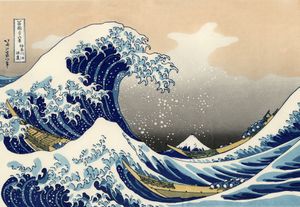 When I was a very young boy, my mother traveled to Japan to vacation with my father who was there on cruise with the Navy. And so, growing up, there was also a hint of that trip to Japan in our lives… a print of the Golden Pagoda in the living room, and intricately carved cork landscape in a glass case, and the futon we used for guests and sleepovers since before futons became cool. But one of the most lasting impressions of my parents taste for Japanese art, wasn’t one found hung on the wall, but was in a set of bookplates used widely in their large library. The bookplates showed a portion of the woodcut titled “In the Hollow of a Wave off the Coast at Kanagawa”, a well-known print more commonly called just,
When I was a very young boy, my mother traveled to Japan to vacation with my father who was there on cruise with the Navy. And so, growing up, there was also a hint of that trip to Japan in our lives… a print of the Golden Pagoda in the living room, and intricately carved cork landscape in a glass case, and the futon we used for guests and sleepovers since before futons became cool. But one of the most lasting impressions of my parents taste for Japanese art, wasn’t one found hung on the wall, but was in a set of bookplates used widely in their large library. The bookplates showed a portion of the woodcut titled “In the Hollow of a Wave off the Coast at Kanagawa”, a well-known print more commonly called just, 